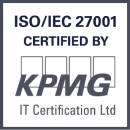Financial crime is on the rise. Criminal money funnelled through the UK or facilitated by UK structures amounts to hundreds of billions of pounds annually. According to a report by HM Treasury, serious and organised crime, much of which is driven by financial crime, costs the UK an estimated £37 billion a year.
Financial crime is a growing and lucrative business for criminal organisations. Criminals devise ever-creative techniques to evade law enforcement and advance their criminal activities, which threaten public safety and national security. These criminal activities, including fraud, money laundering, terrorist financing, bribery, and corruption, cause serious damage to both individuals and organisations.
The financial sector is a target-rich environment for criminals. Identifying and tackling criminal threats early on can help banks and financial institutions make strategic decisions and avoid troubles down the road.
What is financial crime?
Financial crime encompasses a range of criminal activities based on the misuse or abuse of financial systems and services. Criminals resort to deceptive and illegal practices generally associated with the following offences:
- Fraud
- Identity theft
- Money laundering
- Terrorist financing
- Bribery and corruption
- Forgery and counterfeiting
- Market abuse and insider dealing
- Embezzlement and tax evasion
Money laundering and terrorist financing, in particular, can undermine the stability of our financial systems, increase volatility of international capital flows, and lead to potentially disastrous global consequences.
Money laundering
Money laundering is a key component of financial crime, and involves the “cleaning” or conversion of illegally obtained funds into legitimate assets. This can involve hiding tainted funds in an offshore bank account or routing them through a complex web of shell companies and fake invoices.
Terrorist financing
Terrorist financing involves providing financial support or resources to terrorist groups in order to further their aims and activities. As the world becomes increasingly interconnected, the risk of terrorist financing increases as well. Advanced criminal schemes make it difficult for law enforcement to track and freeze terrorist assets.
Financial crime is a serious issue that can have far-reaching consequences. By understanding the links between financial crime and money laundering, we can mitigate the risks and protect our financial systems from exploitation.
What links financial crime to money laundering?
There are strong links between financial crime and money laundering. The explanation is simple. Criminal money cannot enter the legitimate financial system until it goes through the three stages of money laundering: placement, layering, and integration. Hence, financial crime doesn’t end with the crime itself, rather, it is perpetuated and compounded by money laundering.
Money laundering techniques are constantly evolving, as criminals adapt to new technologies and changes in the geopolitical landscape. Here are some of the most common money laundering techniques:
Smurfing
Smurfing is a method used by money launderers to avoid government scrutiny and hide their illicit funds. The technique involves breaking up large sums of money into smaller transactions, which are then deposited in different financial institutions. By using smurfing, money launderers are able to sidestep reporting requirements set out by financial institutions.
Money muling
Money muling allows criminals to transfer illicit funds through the accounts of multiple participants, often without their knowledge or consent. While money muling is seen as a relatively low-risk money laundering method, it can also expose unsuspecting participants to serious legal consequences, including prison time and hefty fines.
Shell companies
Shell companies act as a backdrop for money laundering crimes, as often there is no sign of business activity or operations. In most cases, dozens, even hundreds of shell companies can be registered at a single business address. Criminals set up shell companies in jurisdictions that provide anonymity, which allows them to move money around and hide traces of their criminal activity.
Looking at the pace and sophistication of recent advances in financial technology, it is not surprising that financial criminals and money launderers are constantly innovating to stay one step ahead, and move on to new crimes. To address new and emerging threats, law enforcement agencies have ramped up their efforts, introducing anti-money laundering (AML) and counter-financing of terrorism (CFT) legislation and imposing stricter penalties for non-compliance.
What organisations can be vulnerable to financial crime?
Any organisation involved in dealing with financial and monetary transactions is required by law to comply with AML/CFT safeguards, and take other necessary steps to protect customers from all forms of financial crime. In addition to traditional banks and financial institutions, the following businesses are associated with a higher risk of financial crime.
Money Services Businesses (MSBs)
MSB is a wide term describing businesses that transmit money, facilitate currency exchange and conversion, and provide other money-related services. MSBs are different from banks because they are more than just banks. Due to their availability and affordable pricing, MSBs gained popularity throughout the world and are now adopted by many businesses in the retail and e-commerce industry. Due to their nature, MSBs must adhere to strict compliance regulations in the jurisdictions where they operate, and take all necessary steps to eliminate financial crime.
Payment Service Providers (PSPs)
PSPs are third parties that enable merchants to accept, collect, and manage credit and debit card payments. Simply put, PSPs act as intermediaries between banks, card, and payment networks, carrying out online payment transactions in a simple and efficient way. PSPs offer a range of services that can considerably improve customer experience when it comes to payments. On top of providing customers with a variety of secure payment methods, PSPs support currency conversions, and take care of the entire payment process, including transaction reporting.
Virtual Asset Service Providers (VASPs)
VASPs are businesses that facilitate the buying, selling, and exchanging of virtual assets: cryptocurrencies and digital tokens. Essentially, VASPs provide the framework behind a cryptocurrency exchange. Given that financial crime in the cryptocurrency space is a growing concern, VASPs are subject to stringent AML/CFT obligations as outlined by the Financial Action Task Force (FATF). All VASPs are required to use the necessary tools and controls to fulfil their responsibilities in detection and prevention of financial crime.
Digital banks, neobanks, challenger banks
Unlike traditional banks, the new generation of digital banks, including neobanks and challenger banks, is based around e-banking: online banking services available anytime, at any location, through a range of electronic channels. The digital banks of today combine the latest technology, traditional banking services, and a cutting-edge approach. The main difference between challenger banks and neobanks is that, while challenger banks do most of their business online, neobanks operate entirely online.
How organisations can detect and prevent financial crime?
Organisations can take a number of steps to detect and prevent financial crime, namely, implementing effective AML/CFT controls, and ensuring compliance with all relevant laws and regulations.
Implementing effective AML/CFT controls
Implementing effective AML/CFT controls involves putting in place procedures and controls to identify and manage financial crime risks within an organisation. Effective AML/CFT controls include real-time transaction monitoring, ongoing screening of customers and transactions, sanctions screening, customer risk scoring, and strict policies for handling customer data. Third-party financial crime compliance solutions can strengthen your organisation’s AML/CFT controls, helping you achieve regulatory compliance and fight crime more effectively.
Ensuring compliance with relevant regulations
Organisations around the world must follow certain legislative and regulatory frameworks set out by regulators in their respective jurisdictions. The latter include the Financial Conduct Authority (FCA) and the Financial Action Task Force (FATF) in the UK, the Financial Crimes Enforcement Network (FINCEN) in the US, Australian Transaction Reports and Analysis Centre (AUSTRAC).
By ensuring compliance with jurisdictional AML/CFT regulations, such as the UK’s Proceeds of Crime Act (POCA), the EU’s anti-money laundering directives (AMLD), the US’ Bank Secrecy Act (BSA) and the Australia’s AML/CFT Act, organisations can mitigate the risks of money laundering and terrorist financing, and demonstrate their commitment to protecting their customers and employees.
How can Salv protect your organisation?
Salv provides solutions and tools that support organisations in their fight against financial crime and money laundering. Salv’s AML solutions offers the all-in-one set of tools to detect crime and fulfil your compliance obligations. Our AML solutions takes care of PEP and sanctions screening, real-time and post-event transaction monitoring, and customer risk scoring. With Salv Bridge, you can securely exchange information about suspicious actors and transactions, and conduct joint investigations within our large network of banks and financial institutions. With Salv, you can be confident that your organisation is fully compliant with the latest regulatory requirements, and more.
Financial crime is a major threat to our global economy, and it is up to all of us – individuals, organisations, and governments alike – to work together to prevent it. By paying attention to the warning signs, implementing effective safeguards and controls, we can reduce financial crime and create a safer world now and for future generations.
With Salv’s financial crime compliance solutions, organisations can leverage their data and insights, and fight financial crime more effectively, while staying compliant with data protection and privacy requirements. Book a demo to see our platform in action.




